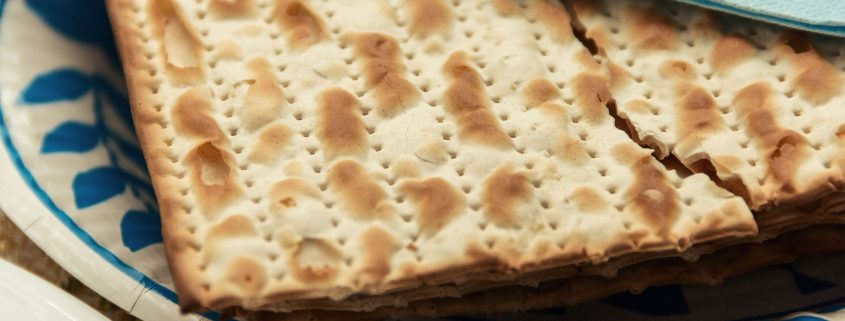The Origin of the Afikomen
The Passover Seder (celebration) contains many poignant traditions, but the eating of the afikomen after the meal is one of the most fascinating customs. The Seder contains 15 separate steps or stages, and the afikomen comes during the twelfth step, which is called tzafun. The Hebrew word tzafun means “hidden” or “concealed,” which accurately conveys the uncertain and peculiar origin of the ritual.
Early in the Seder, the leader lifts up the three pieces of matzah, removes the middle piece and breaks it in half. He then takes the larger half of the broken matzah and sets it aside until later in the ceremony. This broken piece of matzah is the afikomen. In some traditions, the children in the home attempt to steal the afikomen during the meal, while in other traditions the leader hides the afikomen from the children, who then search for it. In both traditions, the leader attempts to redeem the afikomen from the children, often in exchange for a small gift.
Surprisingly, afikomen is not Hebrew, but a Greek word, the precise meaning of which is difficult to determine. Some have proposed the derivation of this word from the Greek verb meaning “I have come.” The writer of Hebrews quotes Psalm 40 in the following passage:
Then I said, “Behold, I have come—
In the volume of the book it is written of Me—
To do Your will, O God.”
Previously saying, “Sacrifice and offering, burnt offerings, and offerings for sin You did not desire, nor had pleasure in them” (which are offered according to the law), then He said, “Behold, I have come to do Your will…”
(Hebrews 10:7-9)
Despite the Messianic emphasis of this reading, it does not seem likely this is the meaning of afikomen.
Others suggest that the word afikomen originates from an ancient Greek tradition known as epikomion. In this tradition, the ancient Greeks participated in pagan after-dinner festivities by traveling from one party to another, so the Rabbis named this piece of matzah afikomen to show how the Jewish community must not imitate the pagan parties in their celebrations. Rather than a continuous evening of festivities, the Jewish people must approach the Passover meal with reverence.
Before the destruction of the Temple, the Jewish community concluded the Passover meal with the eating of a small (olive-sized) piece of lamb. This ritual emphasized the importance of the Pesach sacrifice. Today, the afikomen represents this sacrifice, and Jewish people conclude the Passover meal with the eating of a small piece of the afikomen.
When Jesus celebrated His last Passover with His disciples, He gave them matzah as the symbol of His body. The matzah is unleavened, striped and pierced, just as the prophet Isaiah describes the Messiah: “But He was wounded for our transgressions, He was bruised for our iniquities; the chastisement for our peace was upon Him, and by His stripes we are healed.” (Isaiah 53:5).
Prior to the meal, this matzah was broken, wrapped in linen, and hidden away. Following the dinner, the matzah reappears. For the Messianic Jewish community, the afikomen symbolically represents the Messiah, as Jesus’ body was broken, wrapped in linen, buried, and raised on the third day.
It is interesting that the eating of the afikomen occurs during the tzafun, which means “hidden” or “concealed.” Although the afikomen provides a remarkable symbol of Jesus, the Jewish Messiah, many Jewish people have not yet discovered Him. The Messiah thus remains hidden from much of the Jewish community.



